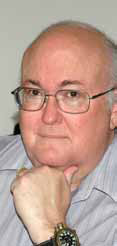Size Matters on the Big Stage

Large Venue Projectors: Year in Review
[Editor’s Note: Joel Rollins will return to the “IMAG” column in the fist issue of 2011.]
I have been around the projector industry almost from the beginning. I do not go all the way back to the original projector from Henry Kloss in 1972, but I was there by the ’80s. This was the world of the three-gun CRT projectors, and these beasts put out a “brilliant” 120 lumens of light output. Fast forward to today: we have pico projectors the size of a cell phone that put out 50 lumens of light output and true large venue projectors that knock on the door of 40K lumens.
Let’s begin with some numbers to consider. The first number represents how many projectors companies who play in this arena have in the 8K lumen range and above. The good folks at Christie Digital win the title again, but just barely. They have 17 products above 8K lumens; DPI (Digital Projection International) has 16, followed by Barco at nine, and Panasonic at five. (Okay, we know Sanyo has a 15K lumen projector, and Eiki has a few in the 10K lumen range; so does projectiondesign, NEC, Sharp, and a few more, but for this review we’ll focus on the companies that specialize in this category: Christie Digital, DPI, Barco, and Panasonic… the others will be covered in this magazine in future articles.)
We will start with the company that has a long history in the projection business, Panasonic. They have decided to play selectively in the large venue segment, with some attractively styled products from 9.6K up to 12K lumens of light output, all utilizing the latest 3-chip DLP engine available in the most popular resolutions. I will begin with their four-lamp optical system, which uses 300-watt AC lamps to deliver their 12K lumens of brightness. The four-lamp system means extra insurance since the projector keeps working even if one lamp goes out.
Next up is Barco. In a sheer number of products, they rank number three, but over the years they have been able to stay in sight of the leaders. In today’s lineup there are several things that they hang their technological hat on. Their FLM series (14K, 20K, and 22K lumens) is the quietest projector of its type on the market. This is due in part to their use of liquid cooling. The FLM boasts fully sealed optics and impressive 1000-hour lamp maintenance, ensuring an overall lower total cost of ownership.
Coming in with second place (only by one projector) for sheer numbers is Digital Projection Incorporated (DPI). They were the first company to work with Texas Instruments DLP and bring large venue projection to the market, and they continue to push the envelope for R&D. They have two product lines in the large venue category: their Titan and Lighting Series. Now they have all the bells and whistles we have come to expect in the category in terms of light output from 8K to 30K lumens in numerous resolutions and configurations, modularity, built-in edge blending, etc., but when I asked Mike Levi the president of DPI what he was most excited about in 2010, he spoke a lot about 3D. Their new Fusion MD and Fusion 3D Processors are fully digital, low-latency warp and blend processors that are compatible with all of their projectors.
A daily selection of the top stories for AV integrators, resellers and consultants. Sign up below.
Let’s wrap it up with Christie Digital. They rule the roost with 17 projectors (currently) in the 8K to over 35K range and they hold the record for the highest light output in their Roadie HD-35K that sports a full 2048 x 1080 digital cinema resolution! For most models they feature full modularity with customer swappable lamp houses, easy change lens systems, DLP chip alignment, easy use GUIs, multiple remote controls, and built-in flying/rigging points in their rental and staging models. One of their newest models the Mirage HD18. It is built on their tried-and-true HD18K lineup, but optimized for both 2D and 3D applications in a single unit, producing an industry leading 18K lumens in a 3D-compatible projector.
There are some so called experts out there that claim that the projector industry is dead and that flat panels will take over. Projection of all types is alive and well and living in every nook and cranny around us.
Alan Brawn (alan@BrawnConsulting.com) is a principal of Brawn Consulting LLC, an audiovisual and IT consulting, educational development, and market intelligence firm with national exposure to major manufacturers, distributors, and integrators in the industry.
